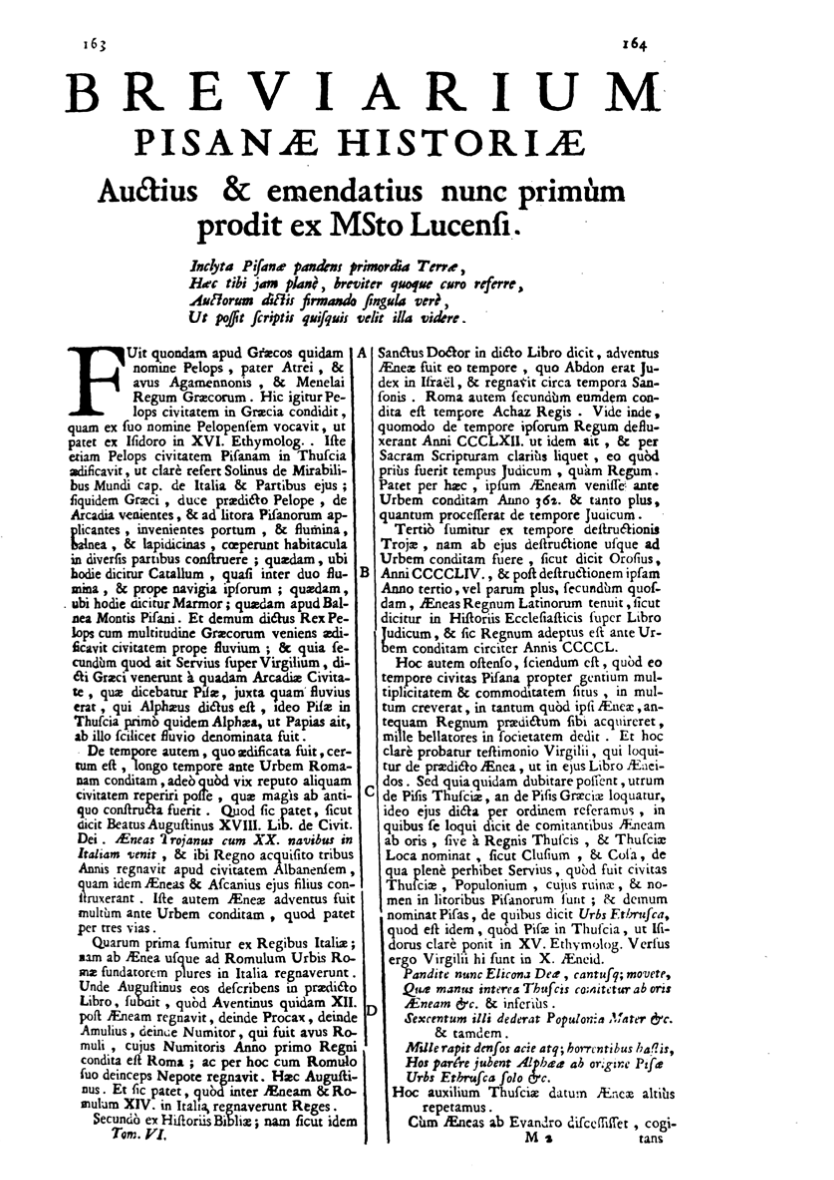The vernacular chronicle preserved in a manuscript in Lucca connects the date 1200 to the start of two important building campaigns: the Arsenale as a fortified port for the city’s warships, and the Camposanto as the new cemetery of the Cathedral. The note about the Camposanto was added as a marginal gloss by the same writer that composed the main text, and is therefore only slightly later. Different from other mid-fourteenth century chronicles, neither Archbishop Ubaldo nor the earth from the Holy Land are mentioned here. Hence it would seem that the chronicle in the Lucca manuscript represents an earlier stage in Camposanto’s origin story, when the legend of the earth was not yet firmly established. Yet the traditional date of the manuscript – ca. 1340 according to Ottavio Banti – is put into question by the author’s description of the building whose details are incompatible with the cemetery’s state at that time: mentioning walls and a roof covered with lead, the text clearly refers to the Camposanto after its completion in the late fourteenth century. In addition, the transfer of the sarcophagi from the Cathedral to the inner area of the Camposanto,mentioned in the text, could not have happened much earlier than this. /DG
Cronaca Lucca Ms. 54Source: Manuscript, ca. 1340 (?). Lucca, Archivio di Stato, Biblioteca manoscritti, ms. 54.
Transcription
“Nelli anni MCC li Pisani, per conservare le loro galee, ordinarono uno luogho murato di grosso muro, in fortessa in guisa d’uno castello, che lla faccia verso levante era lo muro della cità e lo muro di verso mezodì, in sul fiume d’Arno, razente era posto alla porta della Leghatia di Ponte, dove sotto coperto ordinarono LXXX portichi per tenere ghalee; e questo luogho, volgarmente, si chiama arsanà.”
Marginal gloss: “nel MCC si fundò lo cimitero detto camposanto appresso alla chiesa catedrale e finito fue di murare tutto l’edificio e coperto, la sua copritura di piombo, nell’anno MCCLXXVIII, e tutte le tombe di marmo, ch’erano intorno a’ piè delle mura della chiesa, di qui ne si levorno e poste furo nel chiostro di ditto camposanto, l’una apresso all’autra, intorno alla parete del detto camposanto sichome anchora ogi vegiamo.”
Translation
“In the year 1200, the Pisans, in order to protect their galleys, ordered the construction of a place encompassed by strong walls, fortified in the manner of a castle, whose western part was the city walls, and whose southern wall, along the river Arno, was attached to the Porta della Legazia di Ponte, and under a roof they ordered 80 basins to keep the galleys. And this place is commonly called Arsanà.
In 1200 the cemetery known as Campo Santo was founded, close to the Cathedral. And the walling of its masonry was completed and its roof was covered with lead in the year 1278. And all the marble tombs which had been distributed along the perimeter of the church were taken out of there and located in the cloister of the Campo Santo, each one close to the other, around the wall of the foresaid Camposanto, as we can still see today.”

